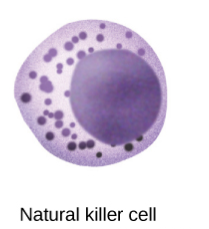Natural killer cells (CD57 cells) were first noted by a Swedish researcher, Rolf Kiessling in the 1970s, and are a type of T cell, representing a significant component of the innate immune system.
CD57 cells do not produce antibodies against a foreign pathogen, but rather, are activated by chemical messenger molecules derived from macrophages including interleukin- 2, 12, 15, and 18, and interferon. Natural killer cells circulate in the blood and possess cytotoxic properties whereby their primary responsibility is to “kill” viral and bacterial pathogens.
Recently, natural killer cells have also been implicated in autoimmune diseases. Autoimmune illness is characterized by the patient’s own immune system attacking “self” tissue, thereby mounting an inappropriate immune response. Autoimmune disease can be divided into two forms: 1) tissue-specific diseases such as diabetes or multiple sclerosis, or 2) systemic disease such as lupus. In both forms of the autoimmune disease, there is an auto-reactive T-cell response against self.
Autoimmune disease is frequently clinically observed in patients with chronic Lyme Disease. As Lyme Disease is known as “The Great Imitator,” underlying Borrelia infection may be present in common autoimmune diseases such as Lupus, Hashimoto’s Thyroiditis, Multiple Sclerosis, Sjogren’s Disease, Rheumatoid Arthritis, and Diabetes.
In 2001, Dr. Raphael Stricker, a San Francisco Hematologist, was largely responsible for identifying abnormal CD 57 cell numbers in chronic Lyme Disease patients. He and his associates documented that those patients exhibiting significant neurological symptoms had lower CD57 cell counts than those with musculoskeletal symptoms. Additionally, it was found that once the underlying Borrelia infection began to be treated, CD57 cell number increased. Dr. Stricker’s work suggests that decreased CD57 cells may reflect an immune defect induced by the Borrelia spirochete that allows the infection to persist, or that a pre-existing immunodeficiency of natural killer cells predisposes patients to be more prone to contracting Lyme Disease.
In any case, clearly, there is a relationship between CD 57 cell number and chronic Lyme Disease, and therefore we can use this as a “biomarker” for therapeutic intervention with antibiotics and/or antimicrobial herbs. Continued research in this area is needed to determine if cytokine changes in chronic Lyme Disease alter the behavior of circulating T cells. Th1 cytokines such as IL-2, interferon-gamma, and alpha tumor necrosis factor may depress CD57 cell production and/or function yielding chronic immunodeficiency in patients with persistent infection.


